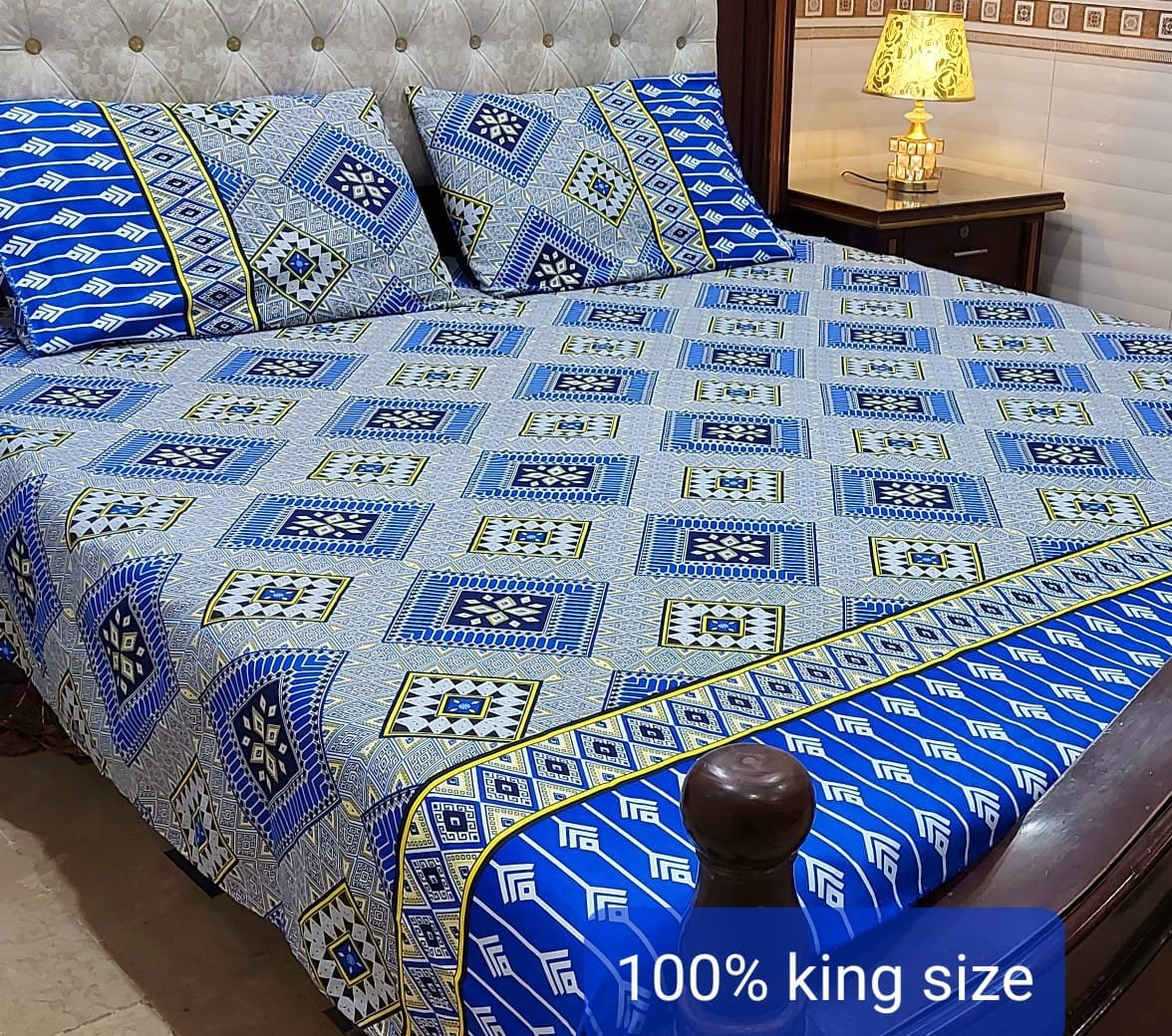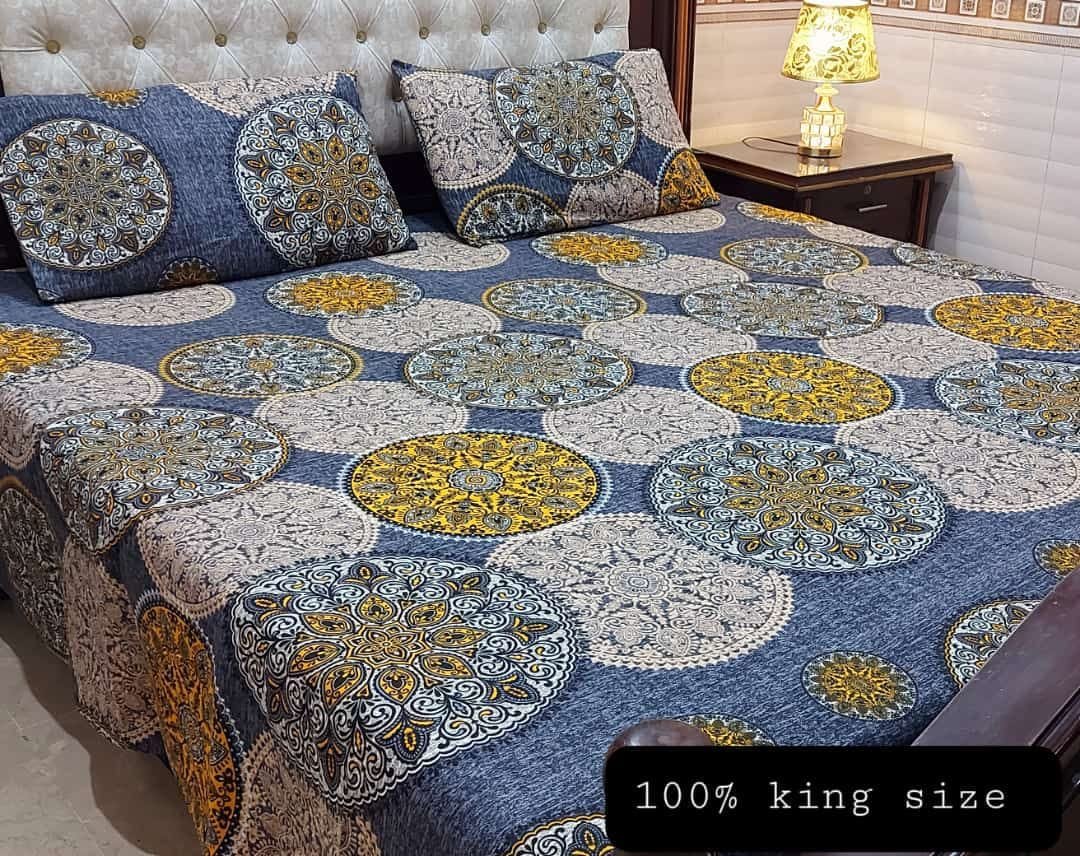Blogs
“Organic vs. Synthetic Bedding: Pros and Cons”
Introduction to Organic vs. Synthetic Bedding:
When it comes to choosing bedding, there are various options available on the market, ranging from organic to synthetic materials. Both types have their own set of advantages and disadvantages. In this article, we’ll explore the pros and cons of organic and synthetic bedding, helping you make an informed decision that aligns with your preferences and priorities.
Organic Bedding:
Organic bedding is crafted from natural materials that are grown without the use of synthetic pesticides, fertilizers, or genetically modified organisms. Here are the pros and cons of choosing organic bedding:
Healthier Choice: Organic bedding is often considered healthier as it reduces exposure to potentially harmful chemicals. This can be especially important for individuals with sensitive skin or allergies.
Eco-Friendly: Organic materials are produced using sustainable farming practices that minimize environmental impact. Choosing organic Organic vs. Synthetic Bedding supports these practices and promotes a more sustainable planet.

Breath ability: Many organic materials, such as organic cotton and linen, are known for their breath ability. They allow air to circulate better, which can help regulate body temperature and enhance comfort during sleep.
Natural Feel: Organic bedding often retains a more natural texture, which some people find aesthetically pleasing and comforting.
Cost: Organic bedding tends to be more expensive than synthetic options due to the higher costs associated with organic farming practices and certifications.
Durability: Some organic materials might be less durable than synthetic counterparts, potentially requiring more frequent replacement.
Limited Variety: While the variety of organic bedding is increasing, it might still be more limited compared to synthetic options in terms of color, pattern, and design choices.
Synthetic Bedding: Pros and Cons Synthetic bedding is made from man-made materials such as polyester, microfiber, or blends. Let’s explore the pros and cons of synthetic bedding:

Affordability: Synthetic bedding is generally more budget-friendly than organic bedding, making it accessible to a wider range of consumers.
Durability: Synthetic materials often excel in terms of durability, with some options being more resistant to wear and tear over time.
Hypoallergenic Options: Some synthetic materials are naturally hypoallergenic, which can benefit those who are prone to allergies.
Variety: Synthetic bedding offers a vast array of colors, patterns, and designs, allowing you to easily find options that match your style.
Chemical Exposure: Synthetic bedding may contain chemicals that could be irritating to sensitive skin or cause allergic reactions in some individuals.
Less Breathable: Some synthetic materials do not breathe as well as natural fibers, potentially leading to discomfort during sleep, particularly in warmer environments.
Environmental Impact: The production of synthetic materials can have a higher environmental impact compared to organic materials due to the use of petrochemicals and energy-intensive manufacturing processes.

Maintenance and Care:
Proper maintenance and care are essential for prolonging the lifespan of your bedding, regardless of whether it’s organic or synthetic. Here are some tips to keep your bedding in optimal condition:
Regular Washing
: Both organic and synthetic bedding should be washed regularly to remove dust, sweat, and allergens. Follow the care instructions on the product labels for the appropriate washing method and temperature.
Drying:
When drying your bedding, consider air-drying whenever possible, as high heat from dryers can weaken fibers and reduce the lifespan of your bedding.
Storage:
Store your bedding in a cool, dry place away from direct sunlight to prevent fading and deterioration.
Pillow Protectors and Mattress Pads:
Using pillow protectors and mattress pads can help protect your bedding from stains, spills, and body oils, extending its lifespan.
Rotation:
Rotate and flip your mattress regularly to distribute the wear evenly and maintain its comfort and support.
Replace When Necessary:
While quality bedding can last for years, it’s important to assess its condition periodically. If you notice significant wear, loss of comfort, or signs of allergen buildup, it might be time to consider replacing your bedding.
Making Your Decision
Ultimately, the choice between organic and synthetic bedding should align with your comfort, health concerns, and environmental values. Consider the following questions to help guide your decision:
Do you have allergies or sensitivities?
If so, organic bedding might be a better choice due to its potential hypoallergenic properties and reduced chemical exposure.
Are you willing to invest more upfront for long-term benefits?
If budget is not a primary concern, organic bedding can offer a more eco-friendly and potentially healthier option.
Do you prefer a wider variety of colors and designs?
Synthetic bedding provides a broader range of choices to match your personal style.
Do you prioritize environmental sustainability?
Organic bedding promotes sustainable farming practices and reduced chemical usage, contributing to a healthier planet.
What’s your climate like? Consider the breath ability of the materials based on the climate you live in. Organic materials like cotton and linen tend to be more breathable.
How important is durability to you?
Synthetic bedding often offers greater durability, which might be appealing if you’re looking for longer-lasting options.
Tips for Shopping and Final Thoughts
When you’re ready to shop for bedding, whether it’s organic or synthetic, here are some tips to help you make an informed purchase:
Research Brands: Look for reputable brands that prioritize quality and transparency in their manufacturing processes. Read reviews and customer feedback to gauge the satisfaction of previous buyers.
Check Certifications: If you’re leaning towards organic bedding, check for certifications such as GOTS (Global Organic Textile Standard) TEX Standard 100, which ensure the materials meet specific environmental and safety criteria.

Feel the Materials: If possible, visit stores to touch and feel the bedding materials. This can help you assess their texture and comfort, aiding in your decision-making process.
Ask Questions: Don’t hesitate to reach out to customer service representatives or in-store experts to ask questions about the materials, manufacturing process, and care instructions.
Consider Your Sleep Preferences: Think about your personal preferences for sleep temperature, softness, and support. Different materials and weaves can affect how warm or cool your bedding feels.
Test Return Policies: Ensure the retailer offers a suitable return or exchange policy in case you find the bedding doesn’t meet your expectations after trying it out at home.
Final Thoughts
Selecting bedding is a personal choice that can significantly impact your sleep quality, comfort, and overall well-being. Whether you opt for Organic vs. Synthetic Bedding, both have their own set of advantages and drawbacks. Take your time to evaluate your needs, preferences, and values before making a decision. Remember that the quality of your sleep is influenced by a combination of factors, including your mattress, pillows, sleep environment, and lifestyle habits. Finding the right bedding is just one piece of the puzzle. Prioritize comfort, health, and sustainability, and you’ll be well on your way to creating a cozy and inviting sleep haven that suits your individual needs.
In the end, both Organic vs. Synthetic Bedding options have their merits, so choose what resonates with you and enhances your sleep experience. Happy shopping and here’s to many nights of restful slumber!
Conclusion
Selecting the right bedding for your needs involves weighing the pros and cons of organic and synthetic options, considering your health, comfort, budget, and environmental values. Regardless of your choice, proper care and maintenance are key to ensuring the longevity of your bedding. Remember, the ideal bedding isn’t just about trends or marketing claims – it’s about finding what provides you with the best sleep experience and aligns with your overall lifestyle.


